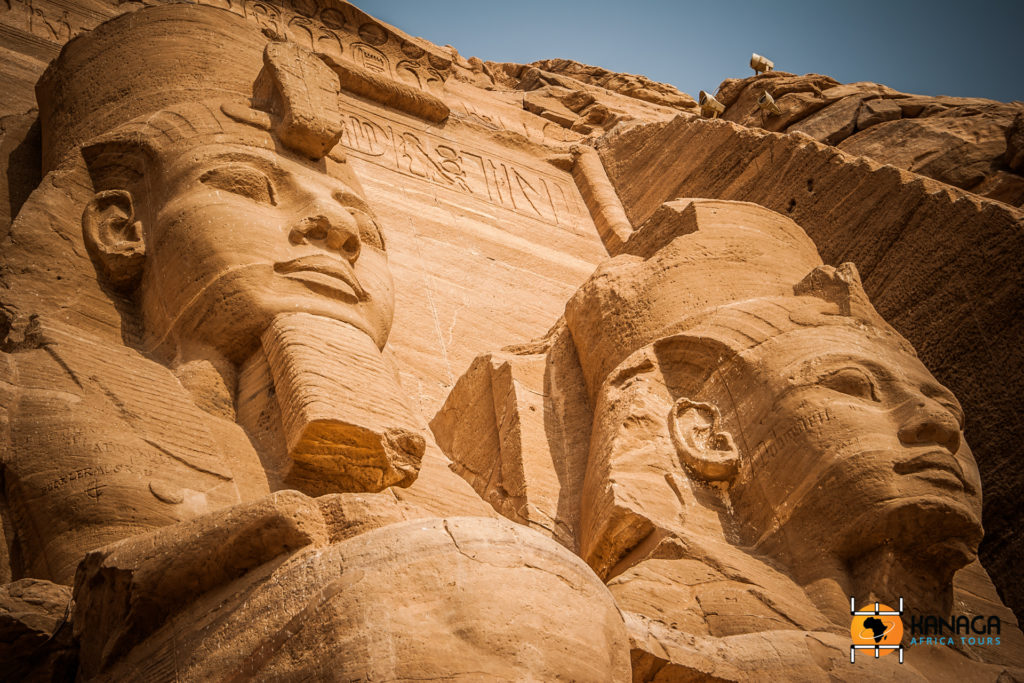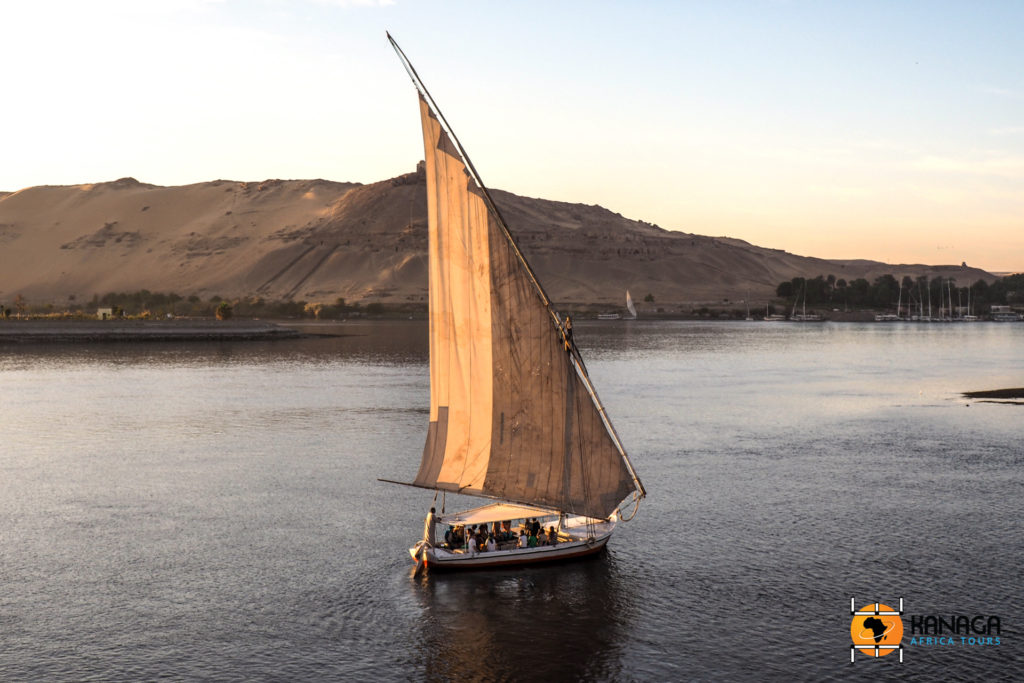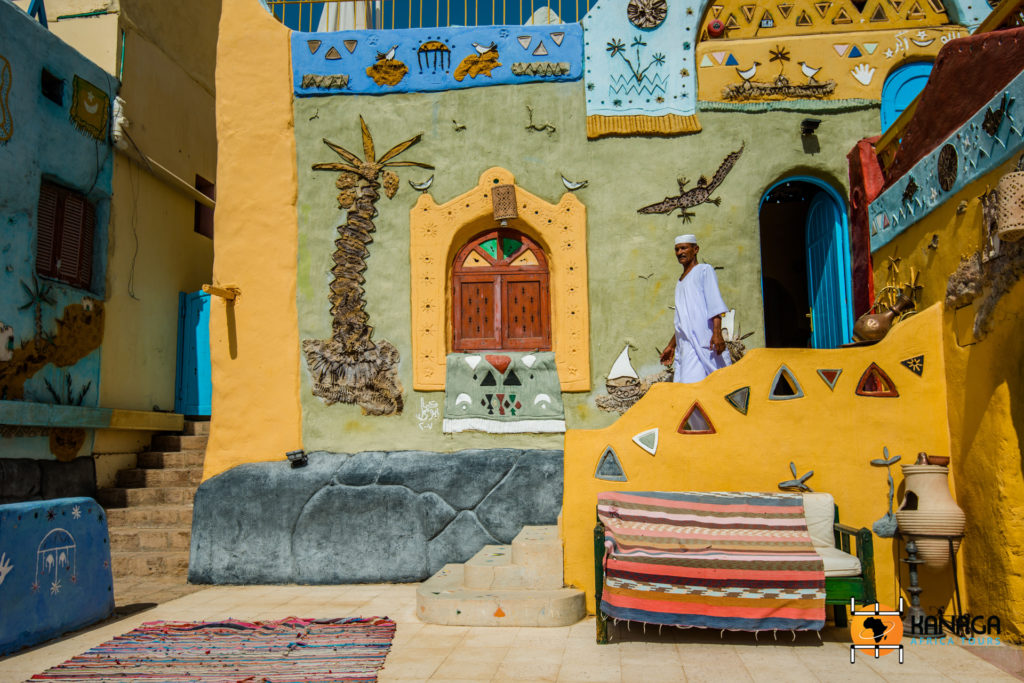Near the city of Aswan, the Great Dam on the Nile, inaugurated in 1971, forever changed the geography of an entire region and the destiny of a population with an incredible past. Only the goodwill of UNESCO and the collaboration of European countries, in a race against time, snatched from the waters of Lake Nasser the priceless treasures, testimonies of the most important millenary civilisations of the Nile Valley, which would otherwise have sunk irreparably into the abyss.
Entirely dismantled and reassembled over a period of twenty years, in a position set back from the banks that were progressively conquered by the rising water level, the temples and monuments from various Pharaonic, Ptolemaic, Hellenistic-Roman, Coptic and Ottoman periods, the undisputed jewels of Nubia, were the subject of the most colossal preservation campaign ever carried out.
Sailing on a dahabeya and navigating between the first and second cataracts of the Nile, an area now occupied by the Nasser reservoir, we can only be grateful that we can still enjoy such an archaeological marvel. If need be, the story of the salvation of such architectural treasures adds even more pathos to the cruise of wonders!
Amidst incomparable Nilotic scenery, a floating itinerary which starts from Aswan, from the grandiose legacies of Elephantine Island, with its triad which controlled the nilometre, and the Ptolemaic-Roman ones on Philae Island, arrives at the Augustan temple of the 1st century AD at Kalabsha, dedicated to the god Mandouli and Isis, and continues to Beit el Wali, a partially rocky site dedicated to Amon-Ra and commissioned by Ramses II, with its sanctuary dedicated to Amon-Ra and built by Ramses II. In Kalabsha, dedicated to the god Mandouli and Isis, it continues on to Beit el Wali, a partially rocky site dedicated to Amon-Ra and commissioned by Ramses II, with its sanctuary with beautiful bas-reliefs and vestibule. It then reaches Wadi el Seboua, with its stratifications at Dakka, El Seboua and Meharraqa, amidst sphinxes and Pharaonic pantheons, Meroitic architecture, Ptolemaic decorations and syncretic Roman-Augustan divinities. It passes through fishing villages, river scenes dotted with feluccas, stealthy Nilotic crocodiles and ornithological paradises, where the legendary names of Tutmose, Amenofi and Ramses are recalled, that shine continuously in richly decorated wall frescoes, vestiges that welcome the divine cults of Amon-Ra and Ra-Harakhti, at Amada and El Darr, immerse themselves in Christian-Coptic reminiscences of the 7th century A.D. at Kasr Ibrim and later Ottoman superimpositions of ancient fortresses of Turkish sultanates. Until you reach the undisputed pearl, the greatest emotion, a dreamlike mirage that suddenly appears from the waters in all its monumentality, the two rock temples of Abu Simbel. Indescribable in their solemnity, the Great Temple of Ramses II and the Small Temple of his wife Néfertari stand out in the heart of the mountain, architectural marvels created in the 13th century B.C. to commemorate the victory in the Battle of Qadesh, exalting the glories of the divinities Ptah, Ra-Harakhti and Amon-Ra.
The façade of the Great Temple, in pink sandstone, measures 30 metres in height and 40 metres in width, composed of four colossal statues 22 metres high, of Ramses II being portrayed with the crown of Upper and Lower Egypt, surrounded by incredible bas-reliefs, minor sculptures and friezes. Not far away is the smaller temple dedicated to the cult of the goddess Hathor, to whom the royal wife Néfertari was devoted. She is shown here with the pharaoh and the goddess whose attributes she herself bears, in a unique example of a temple dedicated for the first time in Egypt to the queen consort, whose effigy is sculpted in proportions equal to those of Ramses.
The site’s magic reaches its apotheosis twice a year with the phenomenon known as the ‘miracle of the sun’, when the sun’s rays, worshipped by the theory of 22 baboons sculpted on the façade, penetrate the sanctuary of the Great Temple, illuminating the statues of Ramses and the deities. The main axis of the temple had been specially calculated by the architects so that the effigy of Ptah, a divinity connected with the underworld, would not be illuminated and therefore had to remain permanently shrouded in shadow. The image of the sovereign is thus enlivened and recharged with the energy of the sun, together with those of Amon-Ra and Ra-Harakhti, with whom Ramses identified himself, through his own deified nature. A grandiose place, combining the strength and power of the pharaoh and his wife with spiritual mysticism, the façades provide an imposing introductory backdrop to the interior, imbued with sacredness and mystery, divided into a pronaos overlooked by the sanctuary and the lateral chambers, also richly adorned with monumental sculptures, frescoes and commemorative bas-reliefs.







